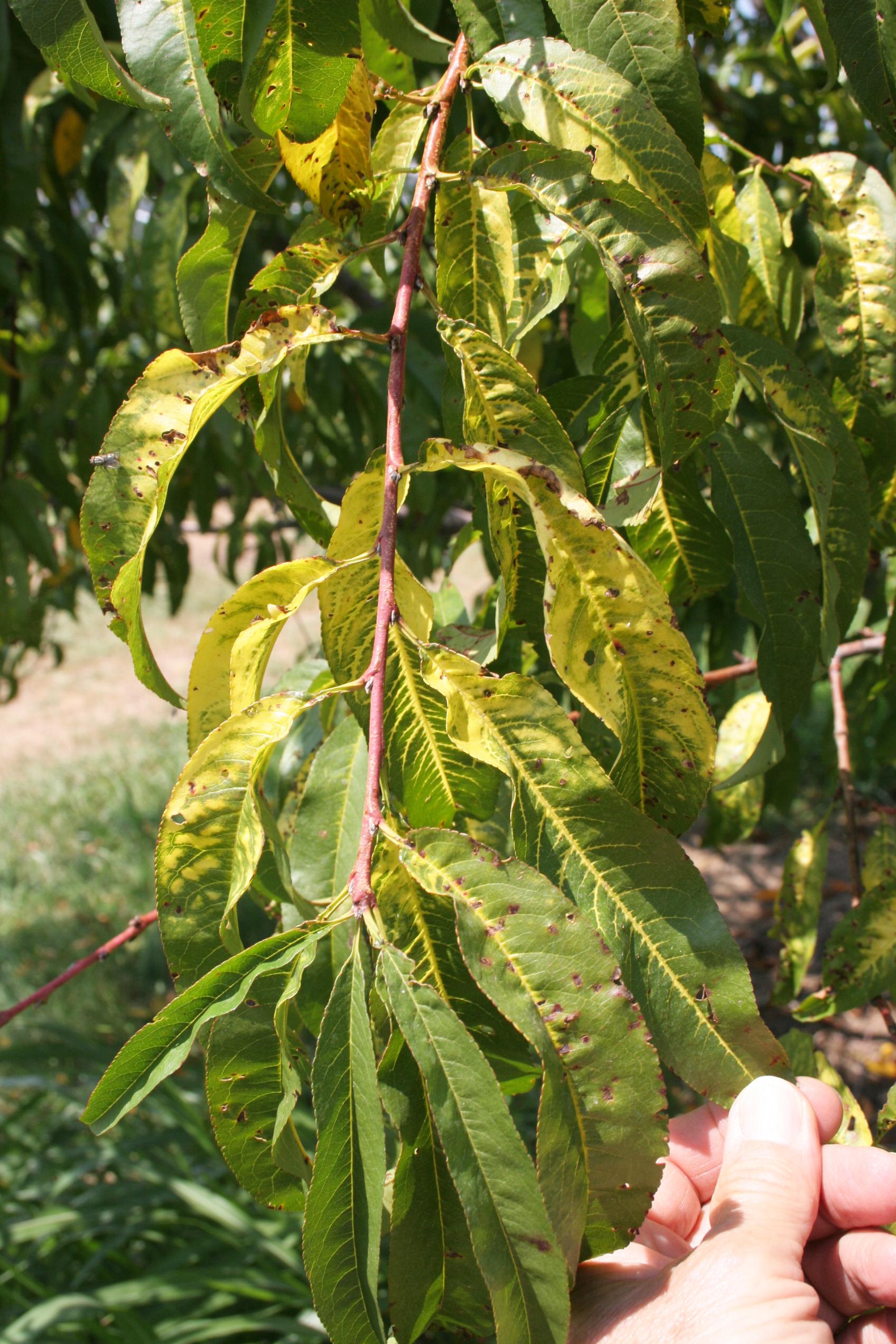Terbacil Injury on Peach
Return to Abiotic Disorders
Terbacil (e.g. Sinbar) injury symptoms begin as interveinal chlorosis (yellowing) followed by severe chlorosis of veins and small veinlets. Damage becomes evident on leaves within several days after a spring application, particularly if followed by heavy rainfall that moves the herbicide into tree root zones, where it is absorbed. This herbicide inhibits root growth and moves upward to affect shoot growth. Young trees are more susceptible to injury because they have shallow root systems. Injury can occur when terbacil rates are too high or applications are made in soils with low organic matter.

Terbacil herbicide injury.
(Photo: John Strang, University of Kentucky)
Management:
- Avoid repeated applications of high rates of terbacil.
- Apply lower rates on low organic matter soils and avoid application to soils that contain less than one percent organic matter.
- Avoid applications if heavy rainfall is predicted.
